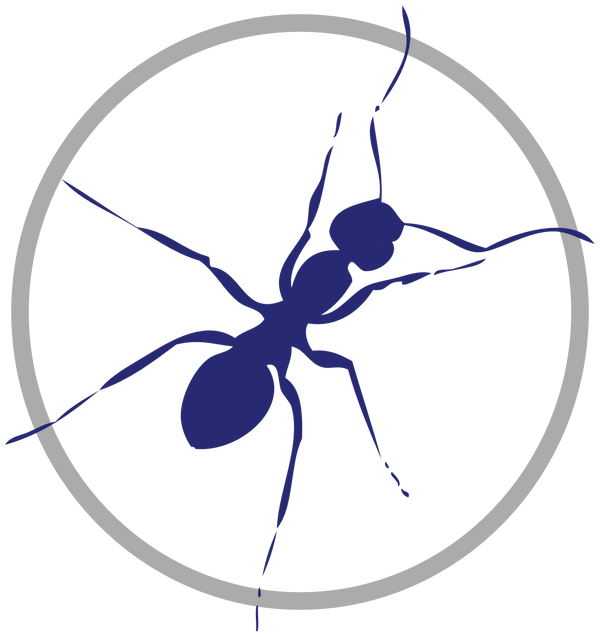ANTS
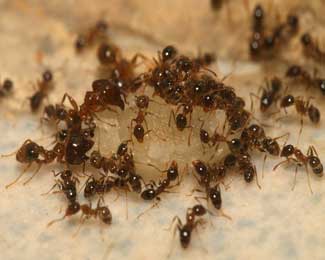
BROWN HOUSE ANT
Pheidole megacephala
They are about 1.5-3.5mm long and are a yellowish-red to reddish-brown
colour. The soldiers of this species have a large head and often the
workers will remove the heads of the soldiers during winter as it is
easier to breed new soldiers than to feed the old ones. They often nest
in the crack between a buildings foundation and the soil. They mainly
live outside but very often enter our home on foraging for food and
water. They can often be found in pot plants. These ants eat sweet and
protein food stuffs and mainly forage at night.
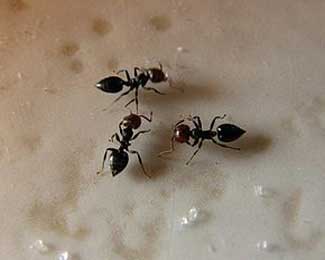
COCKTAIL ANT
Crematogaster peringueyi
These ants are roughly 3-6mm long. They are a darkish brown to almost
black colour. They tend to raise their abdomen above their thorax and
release a repulsive odour when threatened. Their colonies tend be small.
These ants prefer to eat sweet foods and will often tend to aphids for
their honeydew secretions.
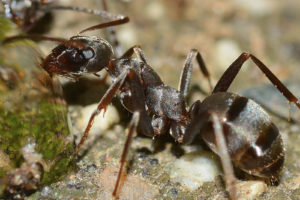
PUGNACIOUS ANT
Anoplolepis custodiens
Also referred to as ” Malmier’. These ants are about 2-10mm in size with
a reddish brown colour with the head being more saturated red than the
body. These ants are very aggressive and predatory and tend to dominate
other ant species in their vicinity. They prefer to eat sweet
carbohydrate foods and thus they ‘farm’ Aphids and Coccids for their
honeydew. This can lead to an outbreak of Aphids on plants. These ants
live outdoors and nest underground with no visible mounds surrounding
their nests entry points.
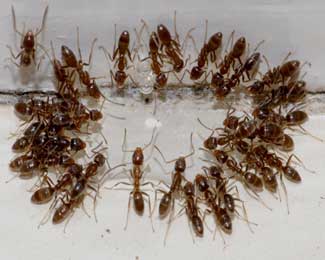
ARGENTINE ANT
Linepithema humile
The adults are about 2.2-3.8mm long. They are light to dark brown in
colour. They have multiple queens per colony, about 1 queen per 100
ants. They prefer to eat sweet foods and can often be found “farming”
with aphids. They stop foraging when it gets above 30°C. These ants were
accidentally introduced to South Africa in the 1900’s from South
America by the British cavalry where the ants would live amongst the
imported horse fodder.
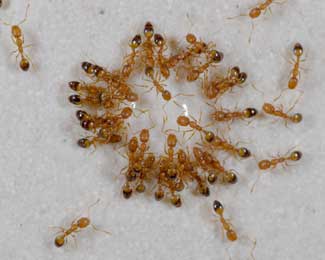
PHAROAH ANT
Monimorium pharaonis
These ants are about 1.5-2mm long. They are a yellow orange colour with a
darkened abdomen. Their colonies can become very large, into the
hundreds of thousands. They prefer to nest in warm, protected areas near
food and water. They tend to forage at night and prefer to eat protein
foods. They can often be found feeding on pet food that has been left
outside. They are dangerous vectors for disease due to their foraging
habits.
Recommended for Ants
-
Sharda® Ant Gel Bait (35g) - Powerful Outdoor Ant Killer for Home and Garden
Regular price R 279.95 ZARRegular priceUnit price / per -
Coopers UltraKill AntForce Granular Ant Bait – 100 g (Professional Strength)
Regular price R 229.95 ZARRegular priceUnit price / per -
Coopers UltraKill AntForce Granular Ant Bait – 50 g (Indoor/Outdoor)
Regular price R 174.95 ZARRegular priceUnit price / per -
Hamba Gogga™ Botanical Pest Repellent Spray COMBO
Regular price R 270.00 ZARRegular priceUnit price / per -

Hamba Gogga™ Botanical Ant Repellent Spray – 100ml | Natural, Plant-Based, Eco-Friendly Pest Control
Regular price R 150.00 ZARRegular priceUnit price / per -
Coopers MultiCare Home Broad‑Spectrum Insecticide – 100 ml (Concentrate)
Regular price R 124.95 ZARRegular priceUnit price / per -
Coopers MultiCare Ant Broad‑Spectrum Insecticide – 100 ml (Concentrate)
Regular price R 124.95 ZARRegular priceUnit price / per -
Coopers DeltaKill CS Insecticide - High‑Strength Insecticide Concentrate – 1 L
Regular price R 1,409.95 ZARRegular priceUnit price / per -
Coopers D-Fend 100ml Multi-purpose, long-lasting, broad-spectrum control (indoor/outdoor)
Regular price R 234.95 ZARRegular priceUnit price / per -
Coopers UltraKill All‑Purpose Aerosol Insecticide – 325 ml
Regular price R 176.95 ZARRegular priceUnit price / per
